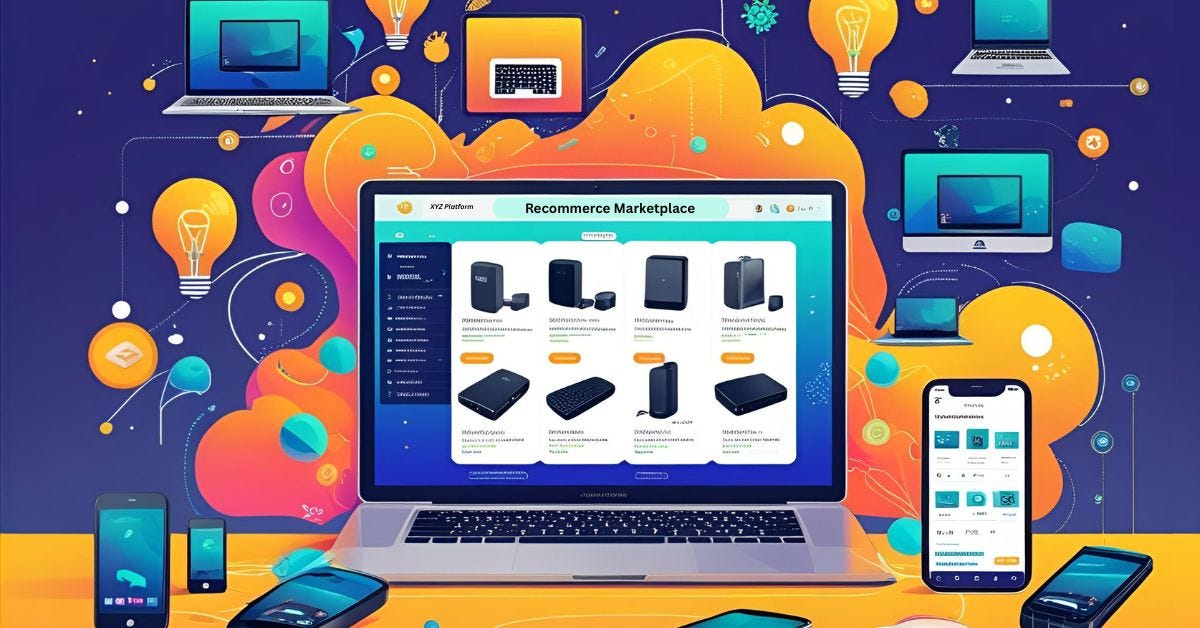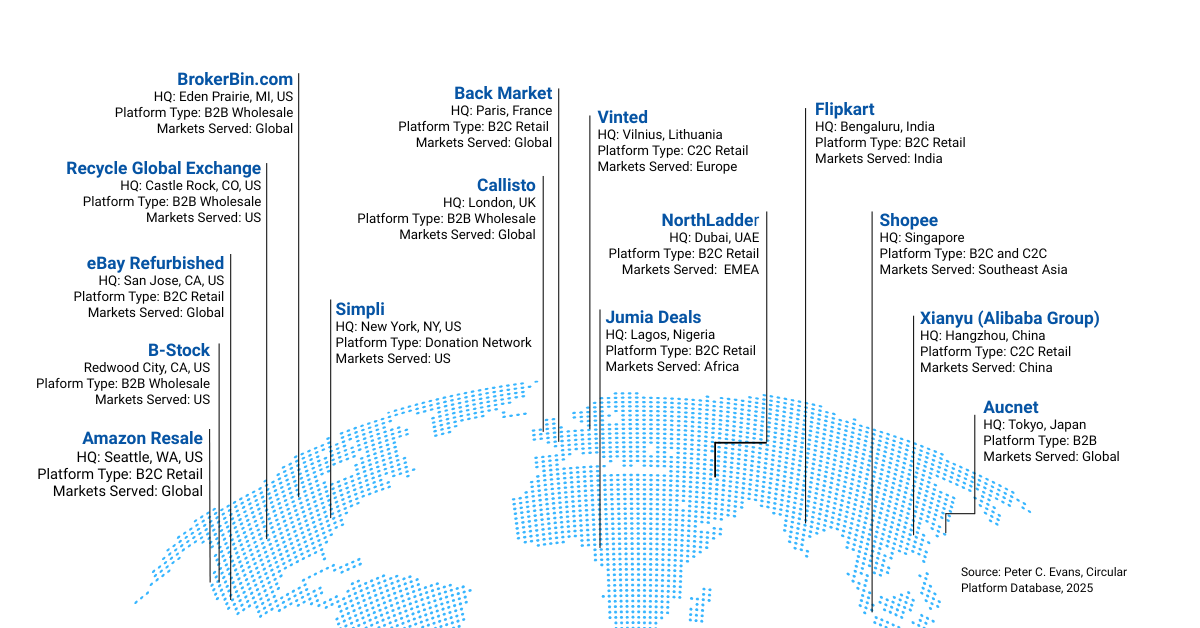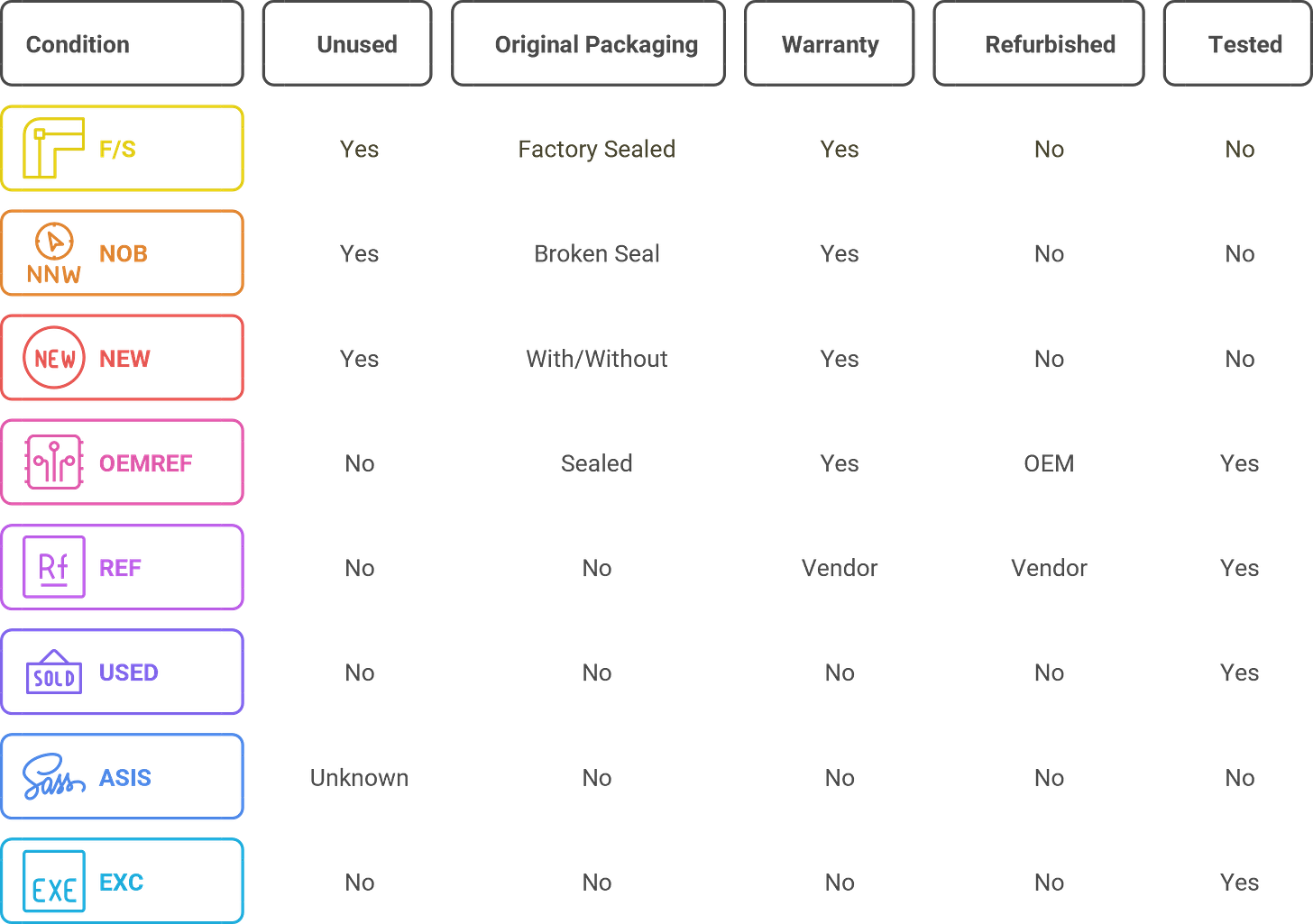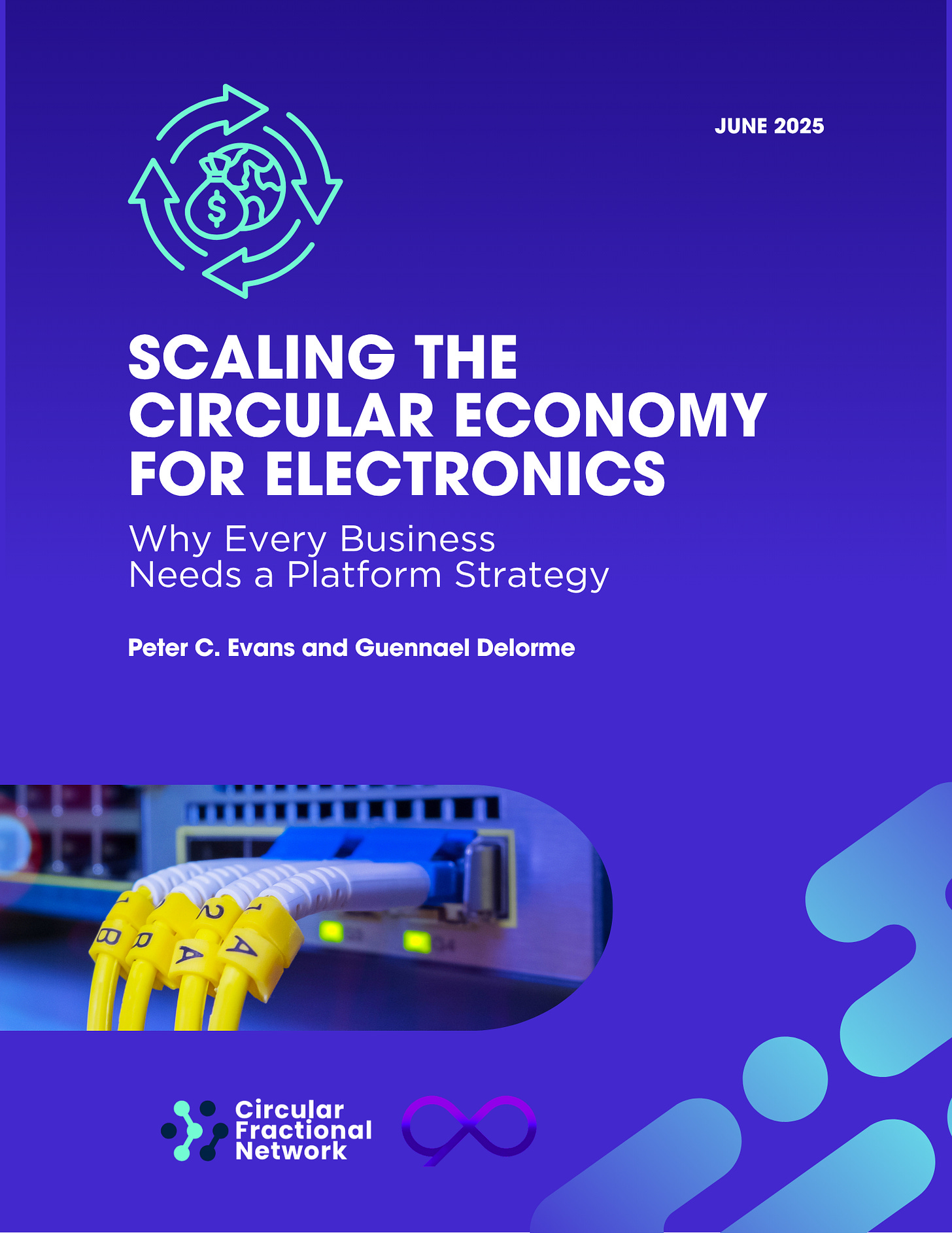How Platforms Power the Circular Economy for Electronics
Reuse | Refurbishment | Repair | Resale
The rapid growth of electronic devices has made sustainable solutions for managing their lifecycle a pressing need. A key principle of the circular economy is to enable the continuous flow of materials and products through multiple owners, rather than letting them end up as waste after a single use. For electronics, this requires flows of devices from one owner to the next. Circular platforms have emerged as transformative enablers in this landscape, powering the circular economy for devices including smartphones, laptops, and many other types of electronics. Unlike traditional ad-hoc recovery efforts that often yield minimal returns—typically only 10–15% of the original hardware spend—purpose-built circular platform strategies can significantly improve recovery values by structuring and optimizing resale and recommerce operations.
Crucially, circular platforms bridge the fragmentation of the used electronics market by connecting sellers and buyers across diverse models—business-to-business (B2B), business-to-consumer (B2C), consumer-to-consumer (C2C), and mission-driven initiatives—spanning global regions. Some focus on matching inventory offered by sellers, ranging from a wide range of device conditions to component parts. Others offer a deeper level of services that extend to secure payment systems, integrated logistics, and value-added services such as device authentication, repair, and warranties.
Growth of Electronics Recommerce Platforms
Many platforms now support the resale of electronics and can be grouped into different platform types that serve different geographic markets. Business-to-business (B2B) platforms like BrokerBin, Aucnet, BidFTA, and Callisto support wholesale transactions between businesses seeking to tap a network of end-of-life electronic solution providers. Primarily serving the United States, B-Stock operates in the wholesale space for returns and used devices, while Recycle Global Exchange (RGX) serves the industrial end-of-life market.
Business-to-consumer (B2C) retail platforms such as Amazon Resale, Back Market, eBay Refurbished, and Flipkart cater directly to consumers, with Amazon, Back Market, and eBay Refurbished serving more global markets, while Flipkart targets India. NorthLadder is a B2C platform focused on the Middle East and North Africa, while Jumia Deals serves Africa.
Vinted is a consumer-to-consumer (C2C) platform for peer-to-peer sales, mainly serving Europe. Shopee operates as both B2C and C2C, enabling both businesses and individual consumers to buy and sell electronics across Southeast Asia. Simpli is a platform based in the United States that focuses on donations, connecting companies with unwanted assets with a network of charities.
This diversity in platform types reflects the diversity of resale markets, the different needs of buyers and sellers, and the state of the devices or parts that are being sold. In essence, circular platforms convert the complex and often inefficient reuse of electronics into a predictable and scalable transaction engine, driving recovery improvements, reinforcing secure and sustainable practices, and powering the transition to a truly circular economy for electronics. These platforms simplify the process, allowing first customers (business or individuals) to easily transfer their electronic items to second customers, extending product life through reuse or recovering valuable materials through recycling.
Value-added Services
Many recommerce platforms integrate secure transaction services, including payment processing, buyer-vendor verification, and fraud prevention tools. Built-in logistics management handles shipping coordination, packaging requirements, and tracking, ensuring goods move efficiently and safely between parties. This reduces the burden on sellers to arrange transport and gives buyers confidence that items will arrive as described.
In addition to these transactional and logistical elements, many recommerce platforms provide value-added services that enhance the product lifecycle and foster confidence in used or refurbished electronics. These include device authentication to verify product legitimacy and prevent counterfeit sales, repair and refurbishment to restore items to optimal working condition, and warranty programs—whether from the original manufacturer, an authorized vendor, or through the platform itself—to cover post-sale defects or failures. Some platforms integrate data wiping and compliance services for electronics that store sensitive information, helping sellers meet privacy regulations and buyers receive equipment free from prior data.
For sellers, these services increase the chances of a sale at a competitive price by presenting products professionally, verifying their quality, and simplifying fulfillment and payment processes. For buyers, they reduce risk, ensure accurate product matching, and provide after-sales support. Together, these features make recommerce platforms not just marketplaces, but full-service ecosystems that enable the secure, efficient, and trustworthy recirculation of electronics—supporting both profitable trade and sustainability goals.
Platforms and Condition Grading
Recommerce platforms typically develop condition grading schemes to facilitate transactions. BrokerBin, for example, is a specialized business-to-business (B2B) online marketplace designed for trading IT, telecom, imaging, and POS equipment. The platform connects members such as brokers, resellers, service centers, integrators, and wholesalers, enabling them to efficiently buy and sell new, refurbished, and used products. Since its founding in 2002, the platform has grown to over 12,500 verified users worldwide. To facilitate secure and transparent transactions, BrokerBin incorporates features like real-time inventory listings, detailed member profiles, a robust feedback system, customized search functions, vendor lists, and broadcast alerts—all within a closed and trusted network.
A vital aspect of BrokerBin’s operation lies in its use of clearly defined product condition grades, which categorize devices based on their state and warranty status. As shown in the graphic below, these conditions cover a wide range of grades from Factory Sealed (unused and unopened in original packaging, with warranty) and New Open Box (unused but packaging seal is broken, also with warranty), to New (unused, with or without original packaging, and warranty), OEM Refurbished (refurbished and recertified by the manufacturer, with warranty), Vendor Refurbished (cleaned and refurbished by a vendor, possibly with vendor warranty), Used (tested working but no warranty or refurbishment), As-Is (unknown condition and no warranty), and Exchanges (products available for exchange or containing a returnable core).
By providing these explicit condition grades, platforms like BrokerBin help buyers understand the exact state and warranty coverage of products, which minimizes risk and uncertainty. This system allows the platform to accurately match sellers' inventory with buyers based on their expectations for product quality and budget. Ultimately, these mechanisms support an efficient circular economy in IT and telecom devices by facilitating the reuse and redistribution of products among multiple owners, thereby extending their useful life.
Conclusion
By aggregating supply and demand across diverse geographic regions and market structures, recommerce platforms enable more efficient transfer, reuse, refurbishment, and responsible recycling of electronic devices. Value-added services such as secure payments, logistics management, authentication, condition grading, repair, and data compliance build trust and simplify every step of the transaction. As their networks grow, they have helped to structure previously fragmented reuse and resale channels, extending the useful life of products, reducing landfill waste, and conserving critical materials. As circular platform growth continues to accelerate, it will contribute to scaling the circular economy and ensuring that every device finds renewed purpose and value long after its first owner.
For a more detailed description recommerce platforms for electronics and how companies can take full advantages of these marketplaces, see the paper “Scaling the Circular Economy for Electronics: Why Every Business Needs a Platform Strategy” I co-authored with
.The full paper can be downloaded here:






While it becomes more efficient, I see companies and industries silo'ing themselves in order to tailor solutions specific to them, especially in huge segments - for example - used iPhones is such I big business, I don't see that ecosystem getting outside that segment and becoming less competitive on purpose in order to deal with another product.